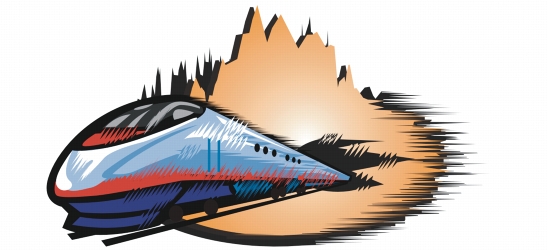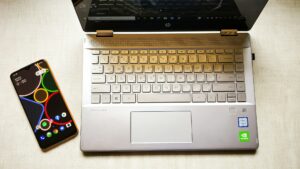Embracing Imperfection: A Comprehensive Guide to Roughening Objects in CorelDRAW

Introduction:
In the ever-evolving landscape of graphic design, CorelDRAW stands as a powerhouse, offering designers a vast toolkit to bring their creative ideas to life. Among the myriad features that empower designers is the ability to roughen objects, an expressive technique that introduces a touch of imperfection and organic charm to digital designs. In this extensive guide, we delve into the nuanced intricacies of roughening objects in CorelDRAW, exploring applications, customization options, and advanced techniques that elevate design manipulation to new levels of creative expression.
Understanding Roughening in CorelDRAW:
Roughening objects involves introducing irregularities, jagged edges, and uneven contours to shapes and lines, creating a handcrafted and textured aesthetic. In CorelDRAW, the roughen tool provides designers with the means to infuse their digital designs with a sense of authenticity, mimicking the organic and imperfect qualities often associated with traditional art mediums. Whether enhancing illustrations, adding character to typography, or creating textured backgrounds, the roughen tool serves as a versatile instrument for achieving distinctive and visually captivating results.
Accessing the Roughen Tool:
CorelDRAW seamlessly integrates the Roughen tool into its interface, providing designers with an intuitive means to access and apply this powerful feature.
- Roughen Tool:
- The Roughen tool serves as the primary instrument for introducing irregularities and textures to objects. By selecting the Roughen tool, designers can activate dynamic brushes that allow for the organic manipulation of shapes and lines.
- Interactive Property Bar:
- The Interactive Property Bar, a dynamic toolbar that adapts to the selected tool, provides quick access to roughening options. When the Roughen tool is active, designers can find relevant settings on the Interactive Property Bar for efficient adjustments.
Roughening Techniques:
Roughening objects in CorelDRAW encompasses a range of techniques that cater to diverse design requirements.
- Interactive Roughening:
- The interactive roughening technique involves real-time adjustments as designers drag the Roughen tool across objects. By varying the pressure and movement, designers can create subtle or pronounced roughening effects, adding texture and character to shapes and lines.
- Brush Customization:
- CorelDRAW provides a variety of brushes for roughening, allowing designers to customize the brush size, shape, and intensity. Brush customization is instrumental in achieving different roughening effects, from fine grain textures to bold and jagged contours.
- Numeric Input Precision:
- For precision in roughening adjustments, CorelDRAW offers numeric input options. Designers can input specific values for roughening parameters, ensuring accuracy and consistency in the transformation process.
Customization Options:
CorelDRAW enhances the roughening process by offering customization options that cater to the specific needs of each design.
- Roughen Styles and Colors:
- Designers can customize the appearance of roughened objects by choosing distinct styles and colors. Whether aiming for a distressed, grungy look or a more subtle textured effect, this customization option adds a layer of personalization to the design process.
- Undo and Redo Functionality:
- The ability to undo and redo roughening actions provides designers with the freedom to experiment and refine their work. CorelDRAW’s comprehensive undo and redo functionality ensures a non-destructive and iterative design process.
- Roughening Intensity:
- Designers can control the intensity of the roughening effect by adjusting parameters such as scale, detail, and randomness. This level of control allows for precise manipulation, whether creating subtle textures or bold and expressive roughening effects.
Advanced Techniques and Applications:
Beyond the basics, CorelDRAW empowers designers to explore advanced techniques for roughening objects, unlocking new dimensions of creative expression.
- Layered Roughening:
- The layered roughening technique involves working with multiple layers to achieve complex and nuanced effects. By applying roughening on separate layers, designers can create depth, texture, and intricate details in their compositions.
- Roughening in Typography:
- Roughening is particularly effective in custom typography and lettering designs. Designers can use the Roughen tool to add a hand-drawn and textured feel to letters, creating unique and visually engaging typographic compositions.
- Texture Mapping:
- Texture mapping involves applying textures to objects and using the Roughen tool to blend them seamlessly. This technique is useful for creating realistic textures in digital paintings, enhancing the tactile feel of illustrations, or adding depth to surface designs.
Applications in Various Design Disciplines:
The ability to roughen objects in CorelDRAW finds diverse applications across design disciplines, showcasing its adaptability and versatility.
- Digital Illustrations and Artwork:
- In digital illustrations, roughening adds a handcrafted and organic quality to artwork. Designers can use this technique to create textured backgrounds, add character to shapes, or simulate the imperfections found in traditional art mediums.
- Logo Design and Branding:
- In logo design and branding, roughening can be employed to infuse a brand identity with a sense of authenticity. Designers can create logos with a vintage or distressed look, capturing the essence of craftsmanship and time-worn charm.
- Print Design and Textures:
- Roughening is valuable in print design for creating textured surfaces, distressed backgrounds, or adding tactile qualities to printed materials. This technique enhances the visual and tactile experience of print collateral.
- Web and User Interface Design:
- Roughening objects is beneficial in web and user interface design. Designers can use this technique to break away from the clean and polished aesthetic, introducing a more organic and human touch to icons, buttons, and interactive elements.
- Packaging and Product Design:
- The ability to roughen objects is valuable in packaging and product design, allowing designers to add character to product visuals. Whether creating a weathered packaging look or adding texture to product graphics, roughening contributes to a distinctive and memorable design.
Conclusion:
Roughening objects in CorelDRAW is a testament to a designer’s ability to infuse authenticity and creativity into their digital designs. Whether working on illustrations, typography, branding, or product design, designers rely on the expressive and textured effects offered by the Roughen tool to bring their visions to life.
As designers continue to explore the extensive capabilities of CorelDRAW’s roughening tool, they unlock new dimensions of creative freedom and expression. Roughening serves as a dynamic tool for design exploration, allowing for the infusion of character, texture, and imperfection into digital compositions. With the ability to roughen objects with confidence, designers navigate the complexities of graphic design, transforming concepts into polished and visually captivating artworks. CorelDRAW, with its intuitive interface and powerful roughening features, remains an indispensable tool for designers seeking to achieve both authenticity and creative innovation in their digital compositions.







